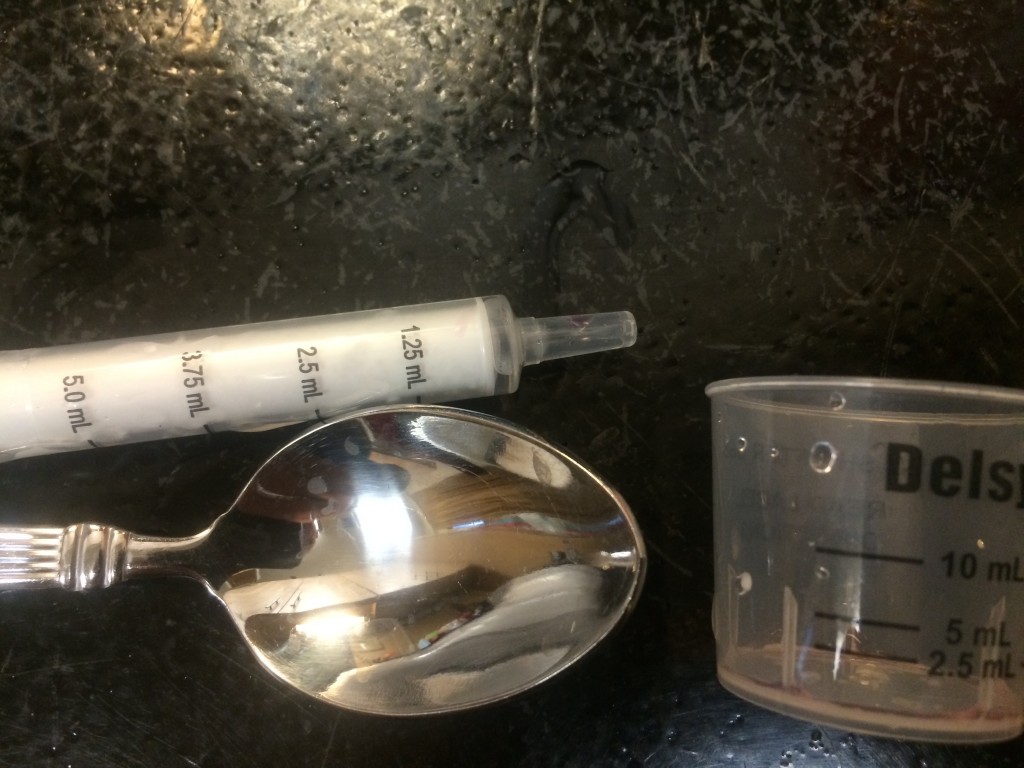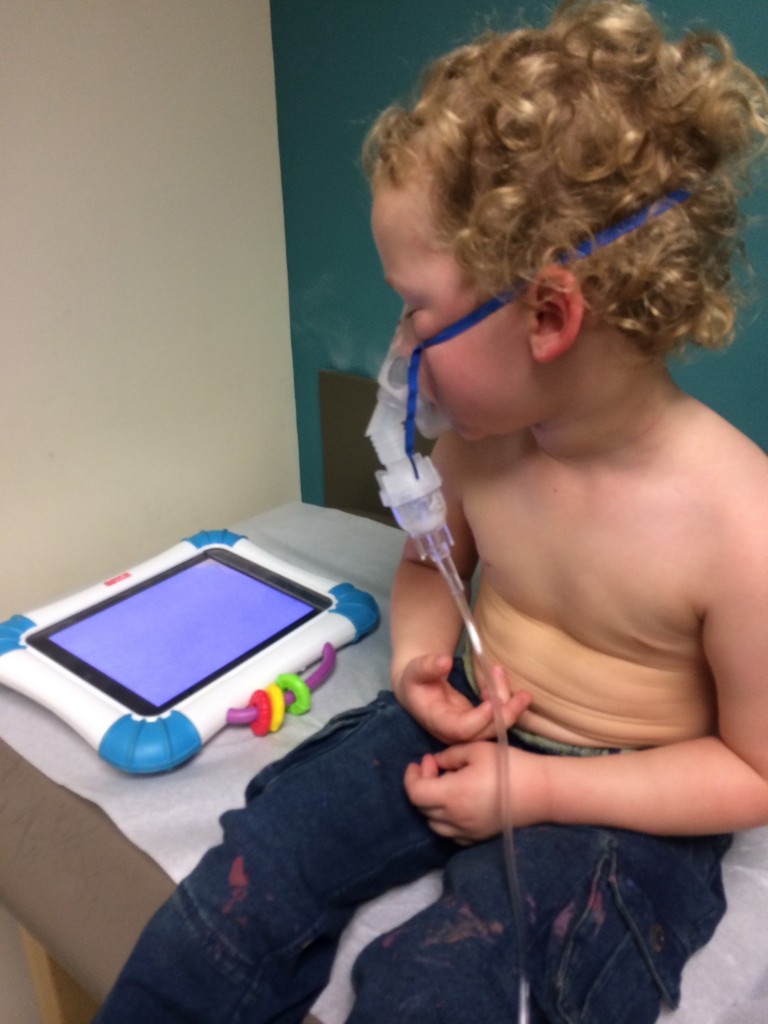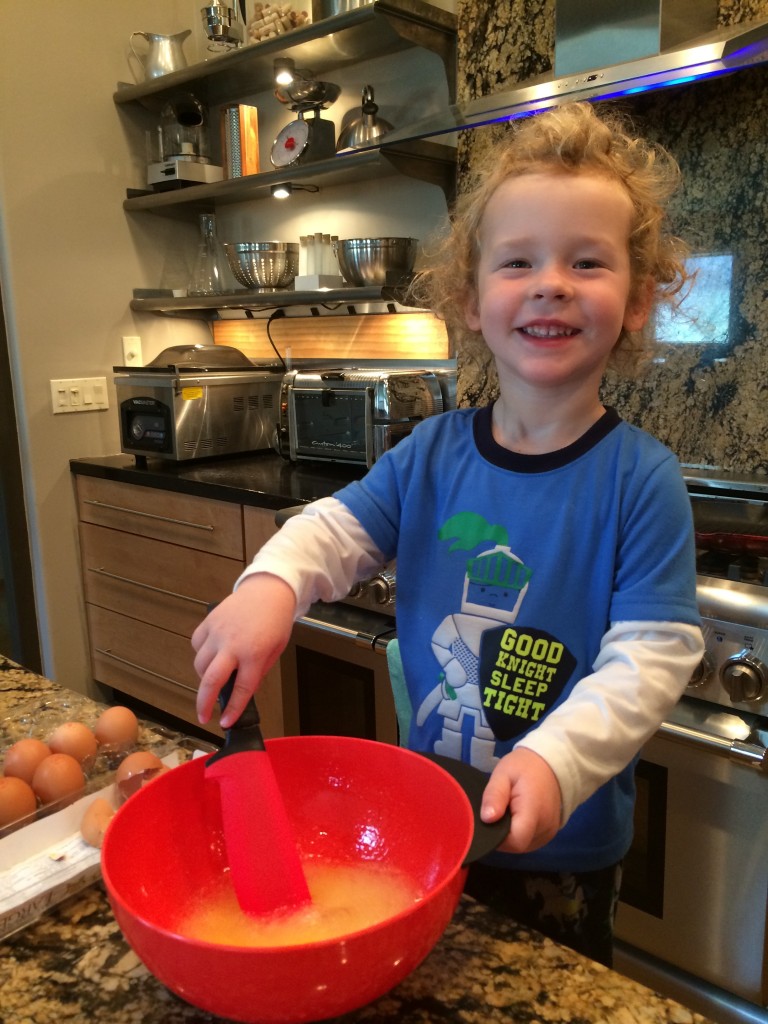The American Academy of Pediatrics is saying it: “Grow up America” go metric or you might poison your kids. When your child is sick there is nothing more you want to do than to see them feel better, but overdosing a child is sadly common. In fact nearly 40 per cent of parents incorrectly measure the medicine for their kids – and that means over 10,000 calls a year to a poison control center. Why do they overdose their kids? Because parents are mixing up a teaspoon with a tablespoon instead of using milliliters.

Two of these measuring devices are precise- and one can overdose your child
A spoonful of sugar helps the medicine go down – and poisons your child. Cooks don’t use kitchen spoons to measure for recipes, kitchen spoons are for one thing- eating. Not measuring. And certainly not measuring medicine. What is more precise: using milliliters. It doesn’t lend itself to guessing, it is precise, and most pharmacies will give you a syringe, or a cup, to allow you to have precise measuring.

There is nothing worse than having a sick kid- this is my son, JJ, at the doctor’s office getting a nebulizer treatment for a cough
According to a study in the August 2014 Pediatrics, “Unit of Measurement Used and Parent Medication Dosing Errors,” published online July 14, medication errors are common. The reason for those errors – most commonly using the kitchen teaspoon or tablespoon for measurement: compared to parents who used milliliter-only units, parents who used teaspoon or tablespoon units to describe their child’s dose of liquid medicine had twice the odds of making a mistake in measuring the intended dose. Parents who described their dose using teaspoons or tablespoons were more likely to use a kitchen spoon to dose, rather than a standardized instrument like an oral syringe, dropper, or cup. Parents need to grow up- use milliliters – it is simple, it is standard, and it proves safer to prevent poisoning your child when dosing.

Even cooking in the kitchen we don’t use “kitchen spoons” to measure ingredients – we use precise tools
Part of the reason why parents may be confused is that a range of units of measurement, like milliliters, teaspoons and tablespoons, may be used interchangeably to describe their child’s dose as part of counseling by their doctor or pharmacist, or when the dose is shown on their prescription or medication bottle label. Due to concerns about these issues, use of the milliliter as the single standard unit of measurement for pediatric liquid medications has been suggested as a strategy to reduce medication errors by organizations like the American Academy of Pediatrics (AAP), Centers for Disease Control (CDC), and the Institute for Safe Medication Practices. See more at: http://www.aap.org/en-us/about-the-aap/aap-press-room/Pages/Reducing-Medication-Dosing-Errors-by-Ditching-Teaspoons-and-Tablespoons.aspx#sthash.NseRlaMC.dpuf
